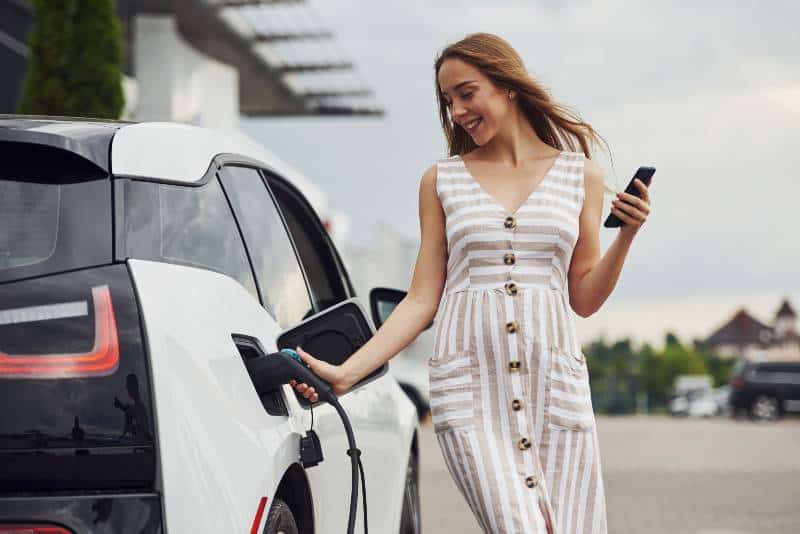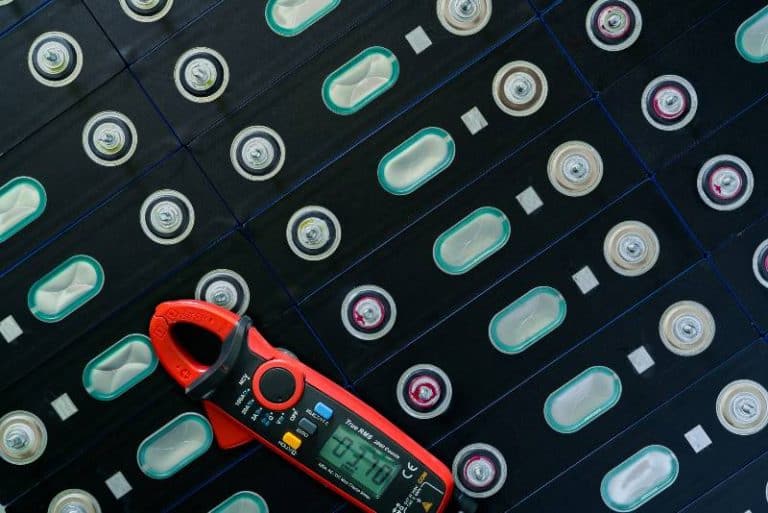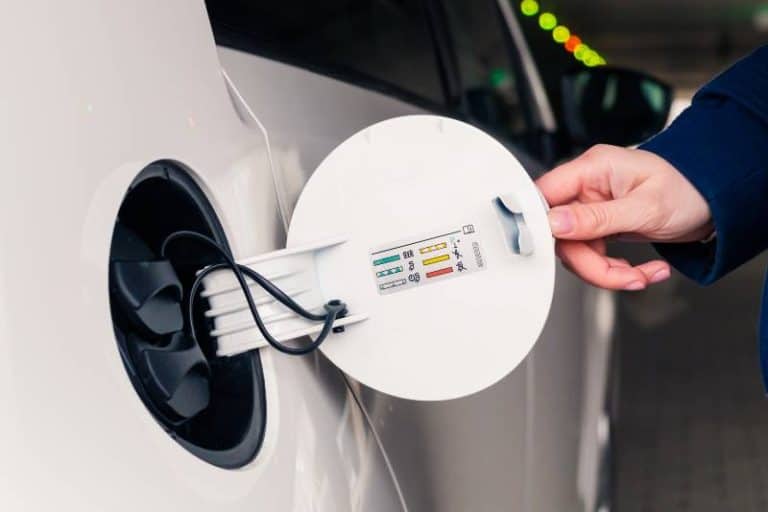Road Trip Ready: Best Electric Cars for Long-Distance Travel
If you are thinking of making a long-distance road trip this summer, why not look at the many benefits of using an electric car? Electric cars provide a more eco-friendly alternative to traditional gasoline engines and can be ideal for long journeys. Not only will you be able to save on fuel costs, but thanks to advances in technology since their introduction, electric vehicles now rival traditional petrol cars when it comes to range and performance.
So if you’re looking for a hassle-free way to travel further distances without worrying about refueling stops or running out of power, then read on as we’ve gathered some of the best electric cars for long-distance travel!
Embark on long-distance journeys with the best electric cars, including the iconic Tesla, the eco-friendly Nissan Leaf, and the stylish Hyundai Ioniq. Discover the limitless possibilities these cars offer and redefine your travel experience!
Key Takeaways
- Modern electric cars offer impressive ranges, making them increasingly viable for long-distance travel.
- For seamless long-distance EV travel, a robust charging infrastructure and route planning tools are essential.
- Electric cars are not only cost-effective in the long run but also promote eco-friendly and sustainable travel.

Factors to Consider for Long-Distance Travel in an EV
Planning a long-distance journey in an electric vehicle (EV) is a different beast compared to traditional gasoline-powered cars. Let’s dive deeper into the factors you’ve highlighted:
Battery Capacity and Range
- This is the heart of your EV journey. Think of battery capacity as the size of a gas tank, but instead of gallons or liters, you have kilowatt-hours (kWh). The bigger the battery, the further you can travel on a single charge.
- For instance, if you had an EV with a 40 kWh battery that consumes 20 kWh per 100 miles, you’d expect to get about 200 miles on a full charge. It’s similar to saying, “If my car has a 10-gallon tank and gets 20 miles per gallon, I can go about 200 miles.”
- Always have a buffer. If you’re planning a 150-mile journey, and your EV’s range is 200 miles, it’s wise to recharge when you hit about 75% of your journey or find a mid-way charging point. Weather, terrain, and other factors can impact the actual range.
Charging Infrastructure and Speed
- Not all charging stations are created equal. They come in different levels, which equate to charging speeds. For example, Level 1 chargers are your standard home outlets. They’re slow and might give you about 4-5 miles of range per hour of charging. Level 2 chargers are faster, commonly found in public areas, and can provide 20-60 miles of range per hour. Then there are the super-fast DC Fast Chargers (like Tesla’s Superchargers) that can pump out 150-250 miles of range in an hour!
- Plan your route around available chargers. Apps like PlugShare or ChargePoint can be your best friend here. They show available charging stations, their speeds, and user reviews.
Comfort and Interior Features
- Long drives mean you’ll be spending significant time inside the vehicle. Features like spacious interiors, ergonomic seating, effective climate control, and entertainment systems can make a world of difference.
- Imagine being on a 5-hour journey and realizing your seats are uncomfortable. Not fun, right? So always test-drive and see if the vehicle’s comforts match your preferences.
Reliability and Warranty
- Long-distance journeys can be taxing on EVs, especially if they’re frequent. You’ll want a car that has a proven track record of reliability.
- Warranties are crucial. A battery replacement can be costly, but a good warranty can shield you from unexpected expenses. Most EVs come with warranties that last for several years or tens of thousands of miles. It’s like having a safety net under your high-wire act!
Price and Value for Money
- The price tag is just one part of the equation. Consider the total cost of ownership, which includes factors like maintenance, electricity costs, potential tax incentives, and resale value.
- It’s like buying a printer. One might be cheaper upfront, but if the ink cartridges are super expensive, it might not be the best value in the long run. Similarly, an EV might be pricier at the start but could save you heaps in fuel and maintenance over the years.
Also, make sure to read this article I wrote before about Solar-Powered Electric Cars: The New Era of Clean Transportation. It will give you a better understanding of the advantages of solar-powered electric cars. Be sure to check out my other articles on related topics for more information!
Top Electric Cars for Long-Distance Travel
2023 Nissan Leaf
While the Nissan Leaf may spark some debate due to its limited range of 212 miles for the SV Plus model and its fast-charging capability falling short compared to its competitors, we have chosen to include it as the starting point in this compilation of top EVs for road trips. The Leaf played a significant role in dispelling the notion that EVs were exclusively for the elite and unaffordable. Although its affordability comes at a slight inconvenience compared to its counterparts, the Leaf makes EV road-tripping accessible to a wider range of new car shoppers.
The Leaf offers a surprisingly roomy and comfortable interior for a small car, boasting standard features that go a step beyond the basics. With an 8-inch touch-screen display, Apple CarPlay, Android Auto, and a comprehensive suite of advanced safety technologies, it presents a compelling package of convenience and security.
2023 Tesla Model 3
The Model 3 stands out as Tesla’s most valuable offering, striking a balance between affordability and an impressive array of features. In 2023, both the base and Long Range models have received an extended range, further enhancing their appeal. However, it is worth noting that the Model 3’s road trip potential is somewhat limited due to the exclusive use of Tesla’s proprietary infotainment system, which means that popular smartphone integrations like Apple CarPlay and Android Auto are not available.
There are three available configurations, offering a range between 272 to 358 miles. Among them, the Performance variant strikes a balance with its range and provides exceptional acceleration along with all-wheel drive, making it the most expensive option in this group.
2023 Hyundai Ioniq 6
The 2023 Hyundai Ioniq 6 is a brand-new addition to the electric car market, yet it immediately claims the top spot in our rankings. Leveraging Hyundai’s expertise as a value leader in the EV segment and its sharp styling prowess, the Ioniq 6 emerges as a well-rounded sedan that holds its own against the brand’s more established crossover offerings. With its innovative design and impressive performance, the Ioniq 6 is set to make a lasting impact in the world of electric vehicles.
The Ioniq 6 offers a luxurious ride, with options for rear- or all-wheel drive and a range of 270 to an impressive maximum range of about 361 miles. Its impressive features include a 12.3-inch touch screen, Apple CarPlay, and Android Auto, among many others.
2023 BMW i4
The BMW i4 is an elegant and stylish “Gran Coupe” — BMW’s term for its coupe-inspired sedans — offering an array of comfort features and a base trim that delivers up to 301 miles of range. Moreover, if the price is within your budget, the i4 proves to be a compelling choice, especially considering that some mainstream EVs’ mid- and top-tier trims are priced higher than the i4’s base model. In summary, this car provides a fashionable and enjoyable way to explore some of the finest roadside tourist attractions.
For those ready to invest more in an i4, an upgrade from rear- to all-wheel drive is available. Noteworthy features include a remarkable curved display, which seamlessly integrates a 14.9-inch touchscreen and a 12.3-inch digital instrument cluster. Additionally, wireless Apple CarPlay and Android Auto come as standard, enhancing convenience and connectivity.
2023 Lucid Air
This is one of the’s Longest Range Electric Cars this 2023! Its top-spec Air sedan has the highest EPA-estimated range of any electric car sold today. With an EPA-estimated 516 miles of range, the Air Grand Touring with 19-inch wheels is the Lucid with the longest legs.
That’s more range than you get in many similarly-sized luxury vehicles powered by gas-fed internal combustion engines, much less competing EVs. The catch is its price; the Lucid Air Grand Touring trim starts at around $139,650. We’ve also noted the Air’s futuristic cabin with its touch-centric interface is “a work in progress.” But make no mistake about it, if you want the most range in an EV, the Lucid Air is the current king.
The Role of EV Charging Infrastructure
They’re not just a trend; they represent the future of transportation. As we embrace the shift from traditional gasoline-powered vehicles to EVs, we encounter a vital component that fuels this transition: the EV charging infrastructure. Think of it as the lifeblood of the EV revolution. Just as gas stations became ubiquitous with the rise of traditional automobiles, EV charging stations are set to become a staple in our urban and rural landscapes.
Types of Chargers: Slow vs. Fast Charging
When it comes to charging EVs, not all chargers are created equal. Essentially, we can categorize them into two main types: slow and fast chargers.
- Slow Chargers: Often known as Level 1 or Level 2 chargers, slow chargers are the more common type found in homes and some public spaces. Picture this: you return home from a long day at work, plug in your EV to a charger that’s essentially an advanced extension cord connected to your home’s electrical system, and let your car refuel overnight. By morning, your EV is fully charged and ready to roll. Level 1 chargers usually use a standard 120V household outlet and can take anywhere from 8 to 20 hours to fully charge an EV. Level 2 chargers, on the other hand, use a 240V system (similar to what large appliances like ovens and dryers use) and can charge an EV in about 4 to 8 hours.
- Fast Chargers: Sometimes referred to as Level 3 chargers or DC fast chargers, these are the chargers you’ll often find at public charging stations, especially along highways. Imagine you’re on a road trip and you pull into a rest stop. While you stretch your legs, grab a snack, and maybe even enjoy a short picnic, your car is getting a rapid boost of energy. Within 20-60 minutes, you can get your battery up to 80% of its capacity. It’s like giving your EV a shot of espresso!
Geographic Distribution of Charging Stations
Now, as you can imagine, the convenience of EVs greatly depends on the availability and accessibility of charging stations. Urban areas, with their dense populations and forward-thinking policies, tend to have a higher concentration of charging stations. You might find them at shopping malls, office complexes, or even dedicated charging parks.
But what about those scenic drives across the countryside or coast-to-coast adventures? Thankfully, the charging infrastructure is expanding into rural areas and along major highways. Strategic placement of these stations ensures that EV drivers can confidently travel long distances without the dreaded “range anxiety”.
Apps and Tools to Locate Chargers
Remember the good old days when we had to use paper maps to find gas stations on road trips? Those days are long gone! Just as technology has evolved, so have the tools to locate EV charging stations. Various mobile apps and in-car navigation systems make it super easy for drivers to find the nearest charging point, check its availability, and even pre-book a slot.
Apps like PlugShare, ChargePoint, and EVgo, to name a few, provide real-time data, user reviews, and payment options. These apps are like the modern-day compass for the EV explorer, ensuring you’re always powered and ready for your next adventure!
The growth and evolution of EV charging infrastructure are paving the way for a more sustainable and eco-friendly future. With the right mix of slow and fast chargers, strategic distribution of charging stations, and nifty tools to help you locate them, the world of electric transportation is becoming more user-friendly and accessible to everyone. So, next time you see an EV whizz by, remember that behind that quiet, clean vehicle is a vast and growing network of chargers, keeping the wheels turning and the future bright!
Tips for Planning Long-Distance Travel with an EV
Ahoy, future electric road-tripper! If you’re gearing up to hit the open road with your electric vehicle (EV), there’s a whole different kind of adventure awaiting you. Don’t fret, with a bit of prep and know-how, you can have a seamless, eco-friendly journey. Here are some nifty pointers to help you plan and enjoy your long-distance EV travels:
1. Planning Routes with Charging Stations in Mind:
- Mapping Apps: Before you channel your inner explorer, whip out those EV-specific mapping apps or navigation tools. Apps like PlugShare or A Better Routeplanner allow you to chart your path keeping charging stations in the forefront. They show you where stations are, what type of chargers they offer, and sometimes even their current status.
- Buffer Time: Always factor in some extra time for charging. Think of it as those little pit stops where you stretch, grab a bite, and soak in the local ambiance. The charger might be a tad slower than expected or there might be a queue. It’s always better to account for these little breaks than to be caught in a race against time.
- Backup Options: Always, and I mean always, have a Plan B. In the unlikely event that your chosen charging station is out of service or full, it’s good to know where the next nearest one is.
2. Understanding Range Anxiety and How to Combat It:
- Knowledge is Power: First off, know your EV’s range. When fully charged, how many miles or kilometers can it cover? Having this figure in mind can really help in strategizing your stops.
- Regular Check-ins: Make a habit of routinely checking your battery status, especially when you’re about halfway through its range. It’s akin to keeping an eye on the fuel gauge in a traditional car.
- Mind the Terrain: Remember that uphill terrains, or areas with lots of starts and stops, can consume more battery. If you’re heading through the Rockies or some hilly landscapes, for instance, factor in some extra energy consumption.
- Stay Calm: The occasional twinge of range anxiety is natural. But remember, with every passing year, EV infrastructure is getting better. More charging stations are popping up, and the EV community is always willing to help out fellow drivers.
3. Optimizing Battery Life During Travel:
- Drive Sensibly: Just like aggressive driving can guzzle up gas in traditional cars, it can also drain an EV’s battery faster. Gentle accelerations and using regenerative braking wisely can extend your range.
- Climate Control: Extreme temperatures can affect battery performance. If it’s super cold or hot, consider preconditioning your car while it’s still plugged in. This means heating or cooling it to a comfortable temperature before unplugging it, which can help conserve battery during the drive.
- Limit High-Speed Travel: While it might be tempting to push the pedal to the metal on open highways, high speeds can deplete the battery more quickly. Consider cruising at moderate speeds for a more efficient journey.
- Unload Excess Weight: If you’ve got unnecessary items in your trunk or rooftop carrier, it’s time to declutter. Extra weight can put additional strain on the battery.
Alright, fellow green traveler, with these tips in your back pocket, you’re all set to have an electrically charged (pun intended) journey! Remember, long-distance travel with an EV is not just about getting from point A to B; it’s about enjoying the journey, embracing the pauses, and celebrating the eco-friendly choices you’re making. Safe travels and happy charging!

Best Electric Cars for Long-Distance Travel FAQs
What is range anxiety and how can I overcome it?
Range anxiety is a term used to describe the fear of running out of battery power when driving an electric vehicle (EV). There are several steps you can take to overcome this, such as planning your routes with charging stations in mind, understanding your EV’s range and battery life, and having backup plans for charging.
How can I find charging stations during my journey?
Modern-day navigational tools like mobile apps and in-car navigation systems make it easy for EV drivers to find the nearest charging point. Popular apps include PlugShare, ChargePoint, and EVgo. These apps provide real-time data, user reviews, and payment options.
Are there additional costs associated with long-distance EV travel?
Generally, EV drivers don’t need to pay for fueling up. However, if you plan on using public chargers, you may have to pay a fee. Depending on the network and type of charger, these fees can range from per-session charges to usage-based plans with monthly subscriptions.
How do EVs perform on highways compared to city driving?
EVs are designed to be more efficient at lower speeds, such as city driving. This means that highway speeds can reduce their driving range by up to 30%. To optimize battery life during highway travels, it is advised to stick to moderate speeds and use regenerative braking whenever possible.
Is it cheaper to travel long distances with an EV compared to gasoline cars?
It depends on several factors, such as the type of EV you own and the electricity rates in your area. Generally, EVs are more cost-effective for shorter trips but still provide significant savings over time. For long-distance journeys, if you’re using public chargers or other forms of charging networks, that can also add up to your costs.
Conclusion
With EV technology advancing at breakneck speeds, electric cars are becoming increasingly viable for long-distance travel. Depending on your lifestyle and daily commute, the right electric car can be both cost-effective and environmentally friendly in the long run. But beyond the vehicle itself, it is important to consider the charging infrastructure and route planning tools available to make long-distance EV travel seamless and reliable.
Thankfully, consumer demand is driving rapid growth in EV adoption as well as in charging networks across the country. For more advice on how to optimize your electric vehicle for long-distance trips, visit our blog and subscribe to our newsletter! Here you’ll find the latest news on solar power, green transportation, sustainability tips, and more!






